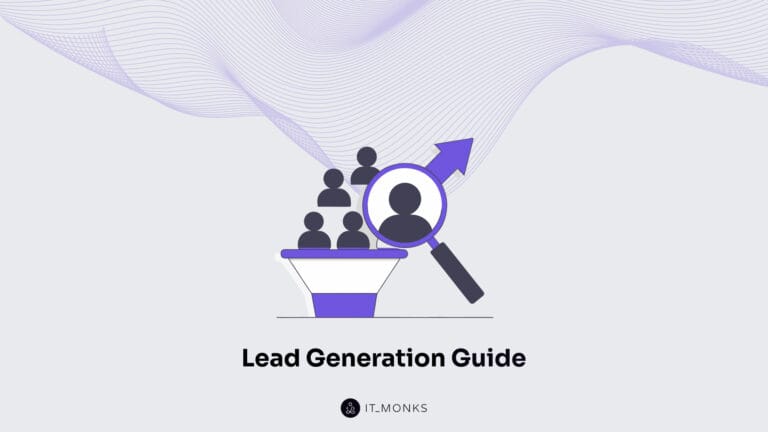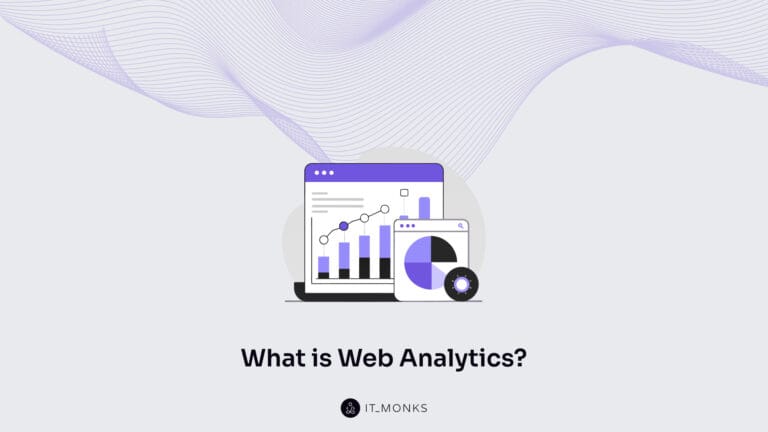Datadog vs New Relic for Enterprise Hosting Monitoring
Table of Contents
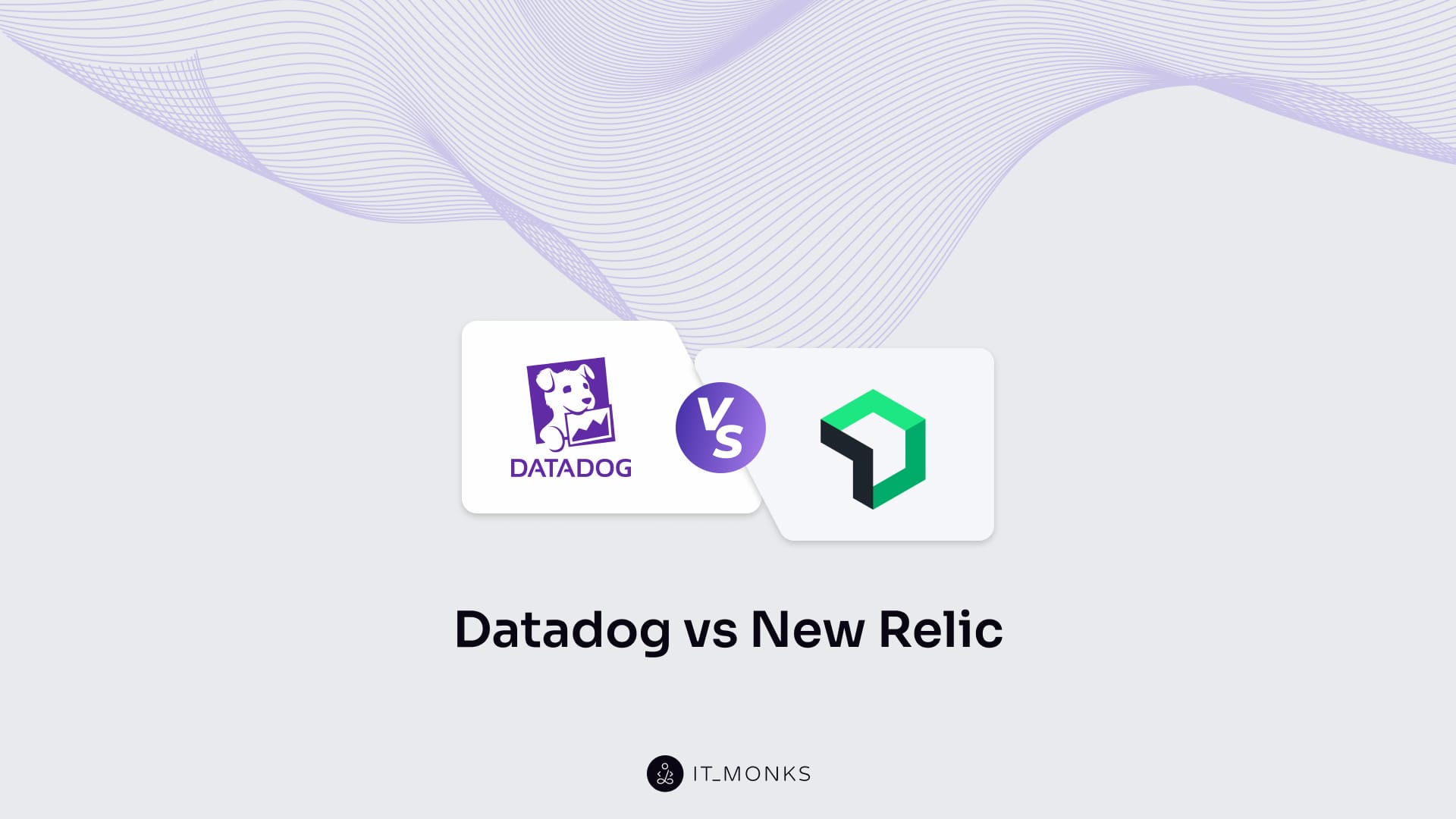
Enterprise hosting monitoring involves the continuous analysis of performance, telemetry, and availability across the digital infrastructure (including servers, containers, orchestration layers, and networks) that powers enterprise websites. It enables full-stack visibility across application and infrastructure layers, making it essential for ensuring uptime, resolving incidents, and optimizing continuous performance. Platforms like Datadog and New Relic operationalize this visibility through distinct architectural roles: Datadog emphasizes infrastructure-layer telemetry and system-level orchestration, while New Relic prioritizes application-layer diagnostics and code-path analysis.
Datadog provides full-stack monitoring for distributed, cloud-native architectures. It captures metrics, logs, and traces across modular website hosting setups, offering granular infrastructure visibility. Through unified dashboards and real-time alerts, Datadog supports cross-layer diagnostics and enables rapid operational responses. As a performance telemetry aggregator, it processes infrastructure events and coordinates responses across containerized environments and load-balanced web layers.
New Relic, by contrast, centers on an application performance monitoring (APM) model. It focuses on code-level diagnostics and transaction tracing within hosting environments. New Relic integrates deeply with application components, offering detailed insights into service behavior and execution flow. It helps enterprise teams identify performance bottlenecks, track SLA (Service Level Agreement) compliance, and optimize modular hosting logic.
While both platforms instrument the enterprise hosting layer, they differ in focus. Let’s compare Datadog and New Relic by discussing the key differences in observability, integration, alerts, pricing, and support for large-scale hosting environments.
Monitoring Coverage Across Hosting Stack
Enterprise hosting environments rely on a layered stack of operational components that jointly support the stability, scalability, and performance of websites. This stack includes application logic, runtime engines, operating systems, container platforms, orchestration frameworks, and the underlying physical or virtual infrastructure. Achieving meaningful observability across these layers requires telemetry systems that not only collect performance data but contextualize it within each layer’s function, from runtime behaviors to infrastructure signals.
As enterprise hosting monitoring tools, Datadog and New Relic function as structural overlays across these layers.
Datadog provides end-to-end monitoring by integrating across the full observability stack. It captures orchestration-layer telemetry and runtime diagnostics, particularly within Kubernetes-based environments. Its distributed agents monitor container ecosystems and report real-time infrastructure metrics, delivering unified visibility through centralized ingestion pipelines.
New Relic, in contrast, is optimized for application and runtime-level monitoring. It captures code-level performance data, integrates with virtualized environments, and traces service interactions across modular runtimes. While it supports container telemetry, its primary strength lies in visualizing application behavior and resolving runtime bottlenecks via lightweight instrumentation.
Both platforms collect signals from distributed architectures, but they differ in focus: Datadog offers broader infrastructure and orchestration visibility, while New Relic provides deeper diagnostic insight at the application and service layers. These contrasting strengths highlight differing approaches to full-stack observability in the enterprise web hosting environment, with one approach favoring infrastructural breadth and the other focusing on runtime precision.
Full-Stack Observability Scope
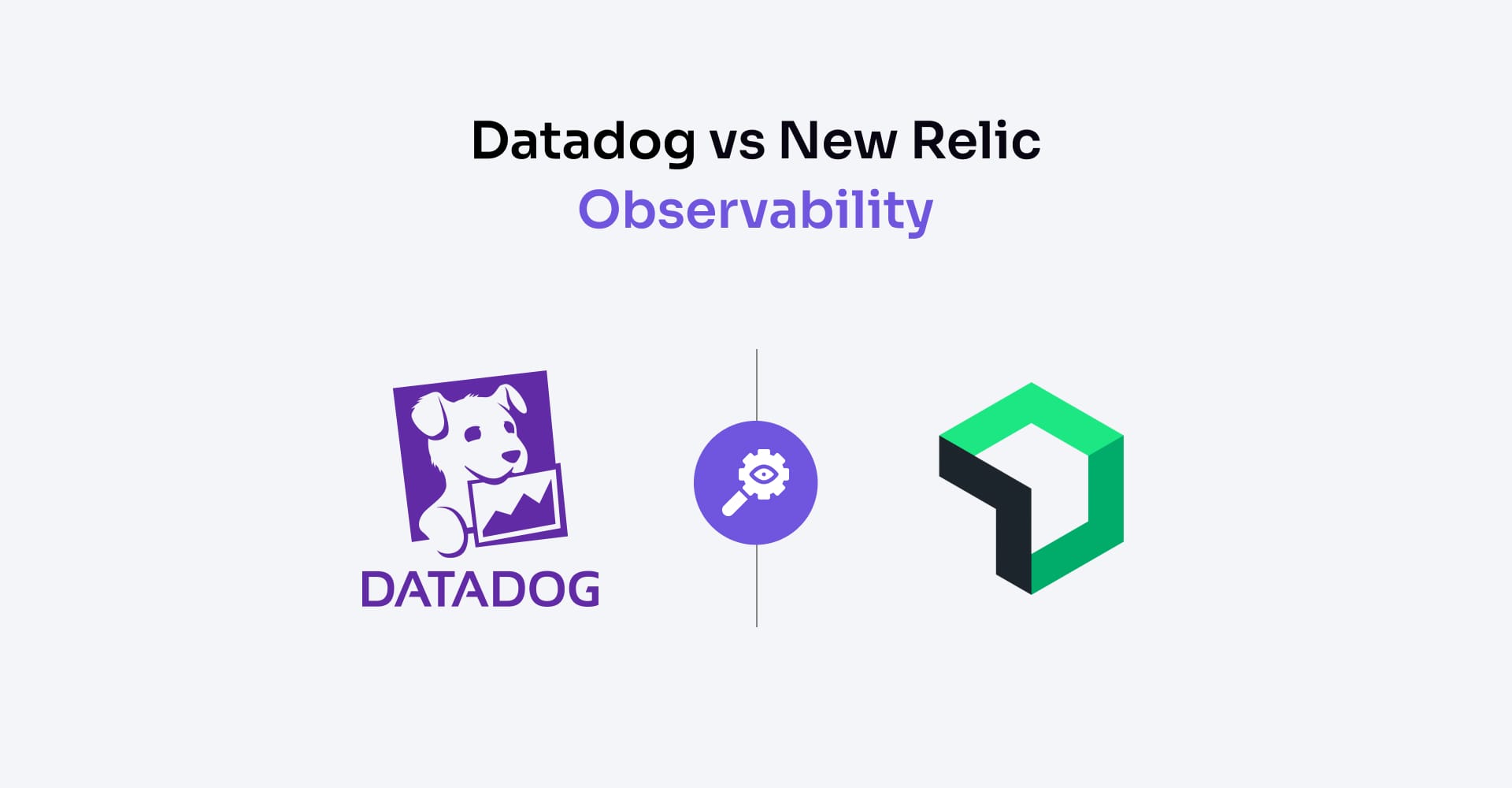
Enterprise hosting environments demand full-stack observability, monitoring that spans from application logic to infrastructure layers. This involves tracing, instrumenting, and visualizing telemetry across all operational components. Both Datadog and New Relic address these needs, though with different emphases on depth, precision, and telemetry resolution.
At the application layer, visibility hinges on understanding code execution and distributed service interactions.
- Datadog captures request-level traces using agent-based instrumentation, analyzing latency issues with span-level metadata across microservices.
- New Relic focuses on runtime instrumentation using lightweight SDKs that trace execution paths, linking performance issues directly to deployment artifacts.
In runtime environments, both tools correlate system behavior with application performance:
- Datadog provides real-time profiling of memory and CPU usage by tracking process lifecycle events.
- New Relic associates runtime state shifts with upstream application signals, visualized through integrated time-series data optimized for both immediate alerts and historical trend analysis.
For the container orchestration layer, each platform leverages Kubernetes telemetry differently:
- Datadog integrates natively with Kubernetes, ingesting pod, node, and control plane metrics to deliver cross-layer orchestration health via unified dashboards.
- New Relic prioritizes lightweight deployments through sidecar containers, enabling transaction tracing without the need for persistent agents.
At the infrastructure level, observability focuses on low-level system insights:
- Datadog ingests kernel metrics and host telemetry to visualize system health through heatmaps that reveal resource saturation.
- New Relic captures virtual machine and cloud instance data, correlating performance logs to expose event-driven behaviors in virtualized environments.
Infrastructure Layer Visibility
The infrastructure layer of enterprise hosting encompasses compute resources, virtual machines, operating systems, containers, and network-facing systems, all of which are foundational to the performance of an enterprise website. Ensuring visibility at this level involves capturing low-level machine behavior and translating it into actionable telemetry for diagnostics and automated response.
Datadog collects infrastructure metrics using a blend of agent-based collectors and cloud-native APIs. It ingests kernel-level data, disk IOPS, and network I/O signals to detect system health at the node level. This enables real-time monitoring of resource saturation, anomaly detection, and the visualization of system-wide health through heatmaps that map infrastructure events to service impacts.
New Relic captures host telemetry across both virtualized and containerized environments using system-integrated agents. These agents collect OS-level metrics such as system call latency and memory paging. The platform transforms this data into “semantic visibility chains,” directly linking infrastructure events, such as virtual machine performance dips, to upstream application behaviors.
At the container-host level:
- Datadog monitors runtime status, CPU cycles, and orchestration feedback (e.g., pod evictions or scaling delays). It aligns telemetry with orchestration events to uncover performance anomalies.
- New Relic emphasizes abstracted system state monitoring across hypervisor environments, presenting infrastructure performance in dashboards that correlate system uptime with application responsiveness.
Integration with Hosting Components
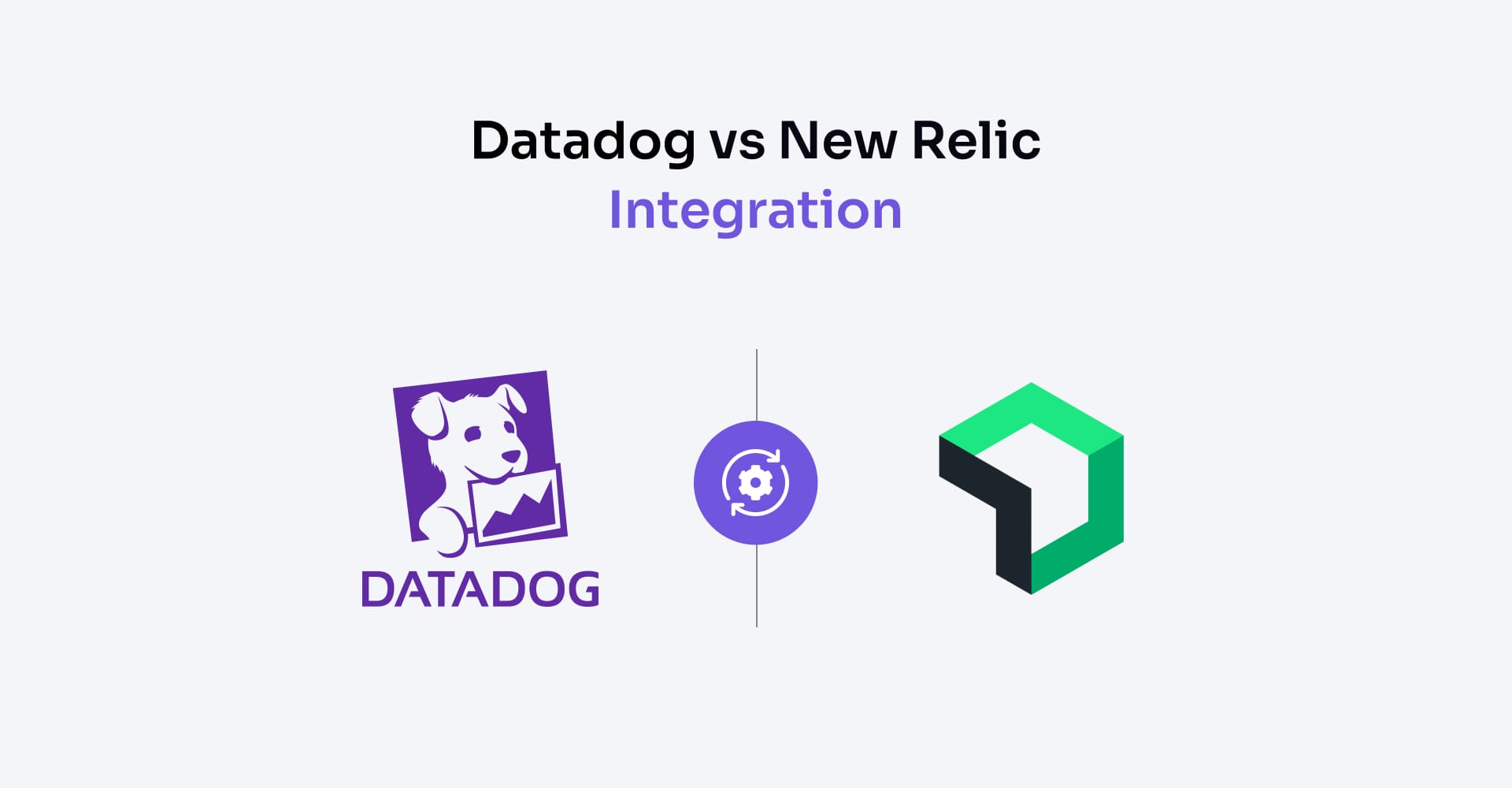
Modern enterprise hosting relies on middleware systems, such as load balancers, CDNs, and orchestration platforms, to manage request routing, content delivery, and dynamic workload allocation. These systems generate high-value telemetry and serve as critical observability nodes within the hosting stack. Both Datadog and New Relic integrate with these components to expose performance signals and trace behavioral flows across layers, from infrastructure to application.
Datadog offers robust integrations with load balancers and ingress controllers, monitoring request paths, tracking response latencies, and analyzing throughput patterns during autoscaling events. It collects telemetry from CDN edge locations, including cache hit ratios, asset load times, and edge-induced latency. In Kubernetes environments, Datadog captures orchestration signals, such as pod scheduling, container restarts, and node resource saturation, rendering these events in real-time through diagnostic dashboards.
New Relic integrates with traffic distribution layers to observe routing logic and detect failover events in clustered setups. It monitors CDN performance by correlating asset delivery with latency spikes during peak usage periods. Within Kubernetes, New Relic uses lightweight agents to trace workload deployments and ingress traffic, mapping orchestration events to application-layer behaviors.
Load Balancer and CDN Support
Load balancers and content delivery networks (CDNs) are essential middleware layers in enterprise hosting, managing traffic flow, and accelerating content delivery at a global scale. Their telemetry not only reflects infrastructure status but also directly influences end-user experience.
Datadog integrates with enterprise-grade load balancers such as HAProxy and AWS ELB to collect routing telemetry, including HTTP status codes, health check failures, and retry loop counts. It monitors upstream and downstream latencies, TLS handshake durations, and visualizes response bottlenecks through real-time routing path diagnostics. At the CDN layer, Datadog captures cache control headers, edge response times, and cache hit/miss ratios. Its telemetry pipelines also track regional asset delivery latency, helping identify edge delivery slowdowns.
New Relic analyzes routing behavior through load balancer tables, resolving patterns in connection spikes, 5xx error clusters, and backend failovers. It visualizes geolocation-related latency shifts and detects congestion across edge servers. For CDNs, New Relic gathers asset availability data and cache-tiering metrics, correlating these with performance fluctuations during high-traffic windows.
Both platforms use this telemetry to detect routing anomalies, diagnose edge-layer latency, and optimize content delivery strategies across enterprise cloud hosting environments. By integrating deeply with load balancing and caching systems, Datadog and New Relic transform routing layers into diagnostic control points, enabling the proactive management of user-facing performance in real-time.
Kubernetes Compatibility
Kubernetes has become the standard orchestration layer for enterprise hosting, abstracting infrastructure into dynamic, containerized workloads. These environments are inherently ephemeral, requiring fine-grained, real-time telemetry from pods, nodes, and control plane components to maintain visibility and performance.
Datadog integrates into Kubernetes clusters using DaemonSets and sidecar containers to ingest runtime telemetry, kube-state metrics, and event streams. It captures indicators such as pod restarts, crash loops, and scheduling delays, then correlates them with node saturation levels and autoscaler actions. Advanced instrumentation via eBPF allows Datadog to trace inter-container network traffic and detect fault domains that span multiple namespaces.
New Relic connects directly with Kubernetes API servers and control planes, collecting telemetry on autoscaler activity, deployment transitions, and namespace-level resource churn. It maps workload volatility to application latency, illustrating how changes to the pod lifecycle affect service throughput. By integrating with scheduler telemetry, New Relic identifies pending pod queues and links scheduling delays to resource contention at the infrastructure layer.
These monitoring systems transform Kubernetes telemetry into semantic observability flows, allowing enterprise teams to isolate fault domains, tune autoscaler logic, and visualize orchestration behaviors as they unfold in enterprise cloud hosting environments.
Alert System Design

Alerting systems are central to enterprise hosting integrity. They act as real-time detection mechanisms, converting telemetry streams (logs, traces, and metrics) into condition-based notifications that initiate incident workflows and trigger on-call escalation paths. Their effectiveness hinges on more than just detection: it depends on how thresholds are defined, how multi-source signals are correlated, and how alerts are routed within high-availability environments.
Datadog creates alert monitors via a multi-source telemetry pipeline that ingests infrastructure metrics, container logs, and APM traces. Monitors evaluate static thresholds, anomaly baselines, and composite rule sets to detect deviations in behavior. Alerts trigger escalation chains via Slack, PagerDuty, or webhooks, and include suppression logic to reduce duplication during cascading incidents. Datadog’s rule engine supports real-time correlation across stack layers, linking, for instance, pod crashes to upstream latency spikes.
New Relic employs an event-condition-action model to define its alerting logic. It processes structured telemetry from application runtimes and orchestration platforms, correlating signals across metrics and logs to evaluate service-specific conditions. Alerts escalate via customizable policies, with support for channels like SMS and OpsGenie. Its alert model features dynamic thresholds that adapt to time-of-day patterns and scaling workloads, while its noise suppression relies on signal aggregation and deduplication techniques.
Alert Latency
Alert latency measures the time between a threshold violation and the delivery of a corresponding notification. In enterprise monitoring, this interval directly shapes time-to-remediation and affects how effectively teams can contain system failures.
Datadog evaluates telemetry data at configurable intervals (typically every 10 to 15 seconds) using agent-side metric pre-processing to minimize the delay between ingestion and evaluation. This low-latency architecture supports rapid alert triggering, especially for container restarts, memory spikes, or autoscaler anomalies. Datadog’s centralized engine correlates signals quickly, reducing propagation lag even in high-throughput environments.
New Relic, by comparison, uses a centralized event-condition-action framework. Alerts are triggered after signal events pass through internal queues, which may introduce latency depending on rule complexity and telemetry volume. In high-load scenarios, resolution times may lengthen due to batch processing and multi-signal correlation, particularly for composite conditions that span services.
Latency performance varies with workload type:
- Datadog excels in short-lived container environments by combining local aggregation with stream-based alerting, minimizing delay.
- New Relic introduces more delay during complex correlations but offers higher diagnostic precision through dynamic evaluation.
In burst-traffic situations, differences become more noticeable. Datadog’s agents can push alerts to the engine within seconds, while New Relic may delay delivery by up to 30 seconds as it resolves broader telemetry patterns. These latency profiles affect incident response velocity and lay the groundwork for evaluating delivery reliability, another critical metric in enterprise observability.
Delivery Reliability
In enterprise observability, delivery reliability refers to a monitoring system’s ability to ensure that critical alerts reach their intended recipients without delay, duplication, or loss, even during integration failures or infrastructure degradation.
Datadog delivers alerts through multi-channel integrations, including Slack, PagerDuty, and email. If a delivery endpoint fails, it automatically initiates fallback escalation protocols. Failed webhook deliveries are retried multiple times, and each attempt is logged at the integration level, creating a comprehensive, traceable audit trail of notification delivery.
New Relic tracks alert delivery through its integration dashboards, monitoring each attempt across OpsGenie, webhooks, and email targets. It records latency, endpoint response codes, and trigger confirmation timestamps. If a route fails, New Relic suppresses redundant attempts to avoid alert fatigue, escalating notifications through predefined policy-based backup channels.
Both platforms monitor the health of their alert delivery pipelines by tracking queue status, endpoint responsiveness, and deduplication integrity:
- Datadog reinforces delivery resilience with webhook status checks and escalation trees that reroute alerts through backup channels within seconds.
- New Relic ensures fidelity through integration-level scoring, along with confirmation tracking for each alert event.
For example, a failed Slack integration in Datadog triggers a fallback to SMS or direct escalation to the operations team, often within 10 seconds. New Relic, on detecting webhook failures, flags the issue in its dashboards and alerts administrators for immediate intervention.
Pricing Models for Hosting
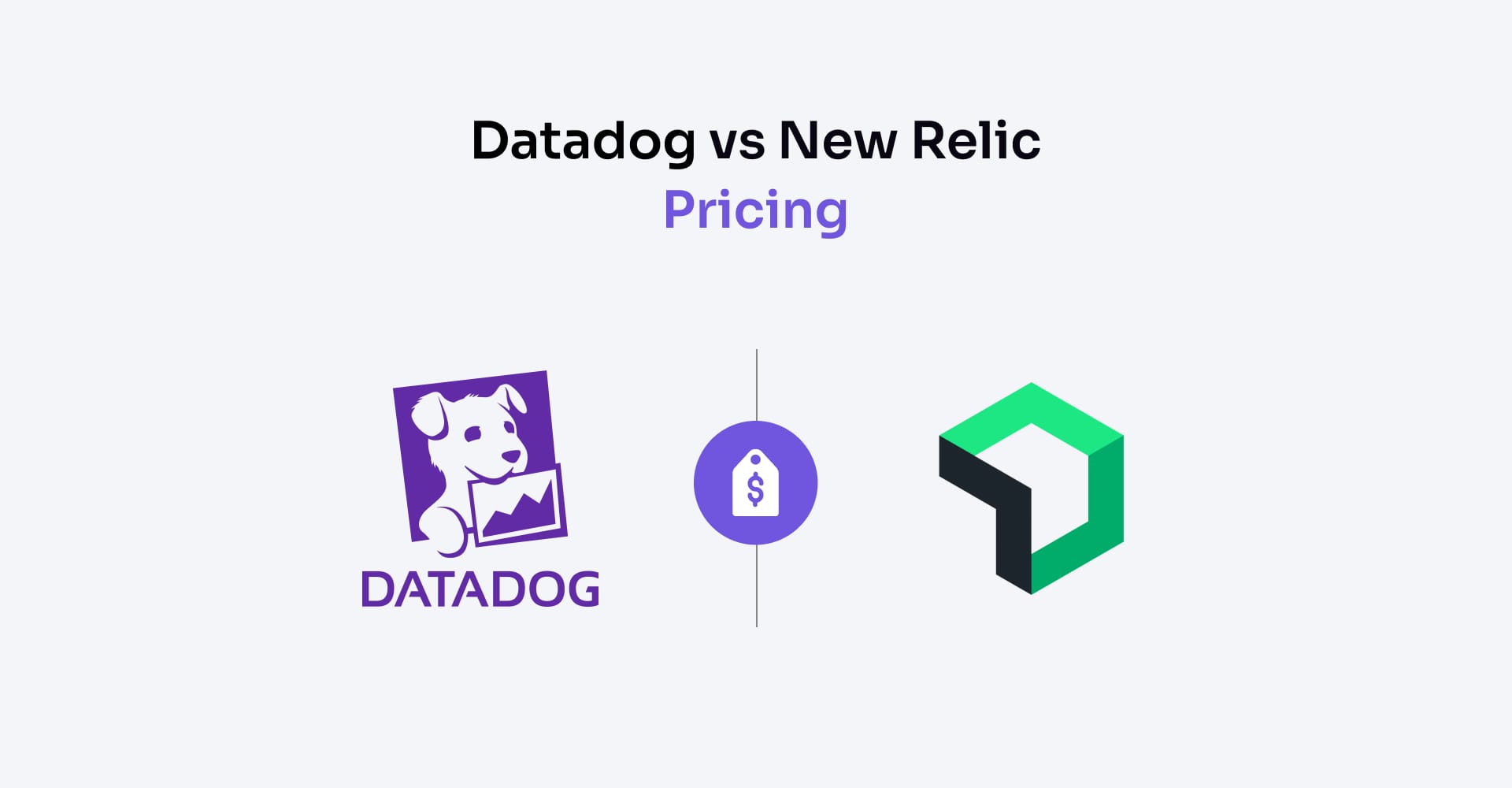
In enterprise hosting, the pricing structure of an observability platform has a direct impact on its scalability, data fidelity, and deployment flexibility. As hosting architectures expand (often through the use of short-lived containers, microservices, and distributed clusters), the economic model behind monitoring can become either a bottleneck or a strategic enabler.
Datadog uses a host- and container-based pricing model, assigning costs per monitored entity (host, container, or custom metric). Its model prioritizes fixed-unit billing, which provides predictable licensing. However, this rigidity can penalize dynamic workloads, such as auto-scaled services or CI/CD pipelines, where container churn and burst telemetry are common.
New Relic, by contrast, operates on a usage-based pricing model. It meters telemetry ingestion volume across metrics, logs, and traces, with pricing that scales based on data throughput and retention levels. This aligns well with short-lived infrastructure, but can introduce cost volatility during traffic surges or log spikes, making budget forecasting more complex.
Both platforms calculate cost based on core units like:
- Datadog: Monitored hosts, containers, and custom metrics
- New Relic: Gigabytes of data ingested, trace frequency, and retention tiers
Longer data retention increases cost across both tools. Datadog monetizes infrastructure presence (entities), whereas New Relic monetizes signal activity (data movement).
Pricing sensitivity grows with container churn, multi-region deployments, and high-cardinality metrics. Enterprises managing a blend of static VMs and dynamic Kubernetes clusters must carefully evaluate how pricing impacts long-term observability ROI.
Host-Based vs Usage-Based Pricing
Pricing models in observability platforms shape not only cost structures but also the architecture of monitoring strategies. Two dominant approaches, host-based and usage-based pricing, reflect different assumptions about how infrastructure and telemetry scale.
Host-based pricing defines cost by the number of monitored entities, such as virtual machines, containers, or services. Charges apply regardless of the volume of telemetry each entity produces.
Datadog adopts this model, billing per active host and associated custom metrics. This structure benefits stable, long-lived deployments but imposes cost constraints on dynamic environments with high container churn or autoscaling activity. Even short-lived containers can trigger billable events, reducing economic efficiency in ephemeral architectures.
Usage-based pricing, by contrast, meters cost according to the volume of telemetry ingested, typically in gigabytes per month across logs, metrics, and traces.
New Relic uses this model, aligning well with modern cloud-native and microservice architectures. It allows for monitoring dynamic services without incurring a per-instance cost. However, the flexibility introduces pricing volatility during periods of increased signal volume, such as deployment spikes, verbose logging, or tracing bursts.
Because infrastructure nodes vary in lifecycle and signal density, the impact of these pricing models depends heavily on workload characteristics:
- Host-based models offer cost predictability in static VM-based environments, but they can discourage full instrumentation in microservice or container-heavy stacks.
- Usage-based models encourage telemetry selectivity and fine-grained ingestion control, but complicate cost forecasting for high-frequency or bursty systems.
Support Availability

In enterprise observability, support is a critical reliability layer that reinforces uptime commitments, adheres to SLAs, and streamlines incident response workflows. When telemetry pipelines break or infrastructure layers falter, the speed and structure of support delivery determine whether diagnostic visibility can be preserved under operational stress.
Datadog offers a tiered support structure, ranging from standard web-based ticketing to premium enterprise plans. Enterprise customers receive 24/7 assistance through severity-based escalation paths, governed by SLA-bound response windows. Platform-specific disruptions, such as container telemetry gaps or integration failures, are routed to designated engineers based on their criticality, enabling faster triage and mitigation.
New Relic maintains continuous coverage across all premium tiers, assigning dedicated contacts to enterprise accounts. Escalation logic is embedded at the account level, with policy-driven resolution windows mapped to the severity of impact. Critical support cases, such as trace data loss or ingestion bottlenecks, are logged and tracked through an integrated incident system that mirrors the urgency of system-wide observability degradation.
In both platforms, support availability is defined not just by access hours, but by infrastructure-aware escalation logic:
- Severity determines routing speed
- Impact influences prioritization
- Integration with account telemetry ensures contextualized support workflows
Enterprise hosting incidents (such as orchestrator failures, telemetry blackouts, or high-churn container degradation) trigger high-priority escalation routes. These pathways are engineered to maintain observability continuity and minimize resolution latency.
SLA Response Times
SLA response times define the contractual guarantees offered by observability platforms to acknowledge and initiate incident resolution within a specified timeframe, based on incident severity and the customer’s support tier. In enterprise-grade environments, these guarantees serve as the operational backbone of platform accountability, especially during system-wide failures or telemetry outages.
Datadog classifies incidents into SLA tiers based on severity. For P1 events (such as the complete loss of telemetry, alert delivery halts, or platform-wide performance degradation) Datadog guarantees acknowledgment within 1 hour under its enterprise support contracts. Each severity level corresponds to a predefined response window. These SLAs are enforced through timestamped tracking, with compliance monitored by internal systems that log every ticket and trigger automated escalations when thresholds are breached.
New Relic uses a combined severity-impact matrix, blending customer-defined urgency with telemetry-driven assessments of system degradation. For Critical incidents (e.g., telemetry dropouts in production clusters), New Relic also commits to sub-hour initial response times, dependent on the customer’s support tier. SLA adherence is monitored via internal dashboards that flag delays and reroute high-priority issues to senior engineers or dedicated service managers.
Beyond timing commitments, SLA logic governs escalation visibility and prioritization. When breached, SLAs can trigger priority overrides or service credit entitlements—transforming these agreements from passive contracts into active uptime assurance mechanisms.
In the broader context of uptime guarantees and SLA commitments, these response windows form a measurable framework of operational reliability. They ensure platform readiness during high-severity hosting incidents, enabling rapid triage and preserving observability across distributed systems.
Access to Dedicated Support
Dedicated support provides enterprise customers with direct access to platform personnel who maintain a contextual awareness of their architecture, operational history, and monitoring priorities. This persistent relationship ensures that every interaction builds upon prior system behavior, reducing resolution latency and improving diagnostic precision.
Datadog assigns Technical Account Managers (TAMs) to enterprise accounts. These platform experts stay closely aligned with the client’s deployment, offering more than just reactive troubleshooting. TAMs provide proactive guidance during telemetry onboarding, integration architecture design, and alert strategy development. Escalations are routed through TAM-aware channels, ensuring continuity of context even in complex, multi-stack incidents.
New Relic provides dedicated support through Customer Success Managers and Solution Consultants, who are assigned based on the support tier. These roles support architecture-aligned engagement, from debugging integration failures to planning instrumentation rollouts and managing SLA-critical events. Their sustained involvement with the account shortens triage cycles and enables performance tuning across dynamic, high-scale deployments.
By bypassing general queues, dedicated support access accelerates resolution timelines, particularly for infrastructure-specific issues such as:
- Kubernetes autoscaler saturation
- Trace interruptions in multi-region clusters
- High-cardinality telemetry drift
These named support relationships contribute to SLA reliability, incident continuity, and alignment with long-term observability goals. Both platforms recognize that support is not just a service, but a strategic layer in enterprise reliability engineering.
Contact
Don't like forms?
Shoot us an email at [email protected]

